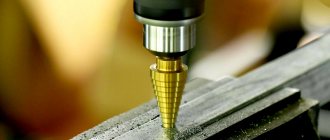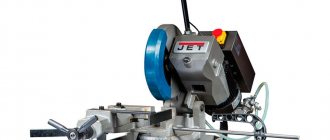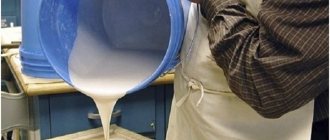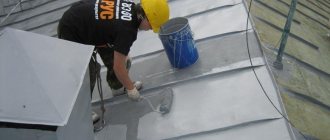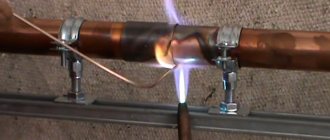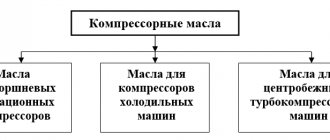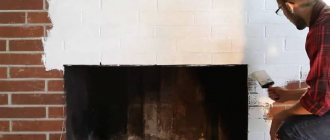Updated: 03/06/2021 13:13:28
Expert: Andrey Nikolaevich Kuznetsov
*Review of the best according to the editors of expertology.ru. About the selection criteria. This material is subjective in nature, does not constitute advertising and does not serve as a purchase guide. Before purchasing, consultation with a specialist is required.
Metal is a durable building material that can be formed into various designs. It is used as a frame for houses, door frames, furniture and stairs. In the courtyard of a private house you can often find iron gates, a fence, or a garage. The only drawback of the material is oxidation upon contact with moisture, as a result of which carbon steel rusts. We present to you a rating of the best metal paints that have high adhesion to solid materials and form a durable protective film. The products were selected by analyzing the characteristics of our experts and taking into account the opinions of customers in reviews.
Types of paints for metal
Oil paints
Materials based on drying oil or other oils have been used for painting metal for a long time. The main advantage of oil paints is their low price. The main disadvantages are low elasticity and abrasion resistance.
The finished coating fades quickly enough in the sun and is afraid of temperature changes. Therefore, oil compounds are not suitable for outdoor work. Most often they are used indoors for surfaces that bear light loads.
Alkyd enamels
Enamels based on alkyd resins are one of the most popular types of metal paints for exterior use. They can also be used indoors to paint metal, wood and stone surfaces. Alkyd coating is stronger than oil coating and can have any shade, be glossy or matte.
Alkyd compositions are characterized by relatively rapid drying. They are easy to work with - provided simple safety requirements are followed, this task can be completed by a non-professional. The disadvantages of alkyd enamels are the need to use solvents and the relatively short service life of the coating.
Acrylic compounds
Painting with acrylic paints allows you to obtain a durable coating that is not afraid of temperature changes, does not crack in the sun, protects against corrosion and lasts for several years. Therefore, it is one of the best metal paints for exterior use. Another advantage of acrylic materials is environmental friendliness. Thanks to this, they can also be used at home - for example, for heating radiators or as decorative paint.
The disadvantages of acrylic compositions include some fading of colors - other types of paints may be brighter. Another disadvantage that can be significant when choosing paint for metal is the relatively high price. Acrylic sets quickly, but it takes several days for the composition to dry completely - during this time it is advisable to protect the coating from damage and dirt.
Nitro paints
Materials based on cellulose nitrate have been developed for painting automobile bodies. Gradually they began to be used in other areas, including for processing metal structures in everyday life.
Here are some positive properties of nitrocellulose-based metal paints:
- Aesthetics: you can get bright colors, mirror glossy shine.
- Fade resistant: color lasts for a long time.
- Possibility of outdoor use.
- Fast drying.
Most often, nitro paints are sold in cans. They are sprayed onto a primed metal surface in a thin layer. The material is toxic, so it is recommended to work in respirators.
Powder formulations
When choosing which metal paint is best, it is difficult to ignore powder formulations. They form a very durable protective layer that lasts for many years. However, in everyday life, powder coating is almost never used due to the complex application: the powder must be preheated. Using this technology, metal elements are often painted in a factory setting.
How to paint metal correctly
Cleaning the surface from rust using a special drill attachment.
Having chosen the coloring composition, we get to work. Immediately before painting the structure, it is necessary to carry out a number of preparatory work.
In order to determine how to paint metal correctly, you need to inspect the surface, finding out the following points:
- Is there an old coating layer on the surface?
- If the structure has not previously been painted, then it is necessary to carefully inspect it for rust. If rust has been detected, then it is necessary to use special means designed to remove it.
- You should also determine whether a primer is necessary.
- For a large volume of work, it is also advisable to determine the area to paint metal structures per 1 ton of weight in order to calculate the amount of paint in advance.
If the metal structure is covered with a layer of old paint, then to remove it you need to use sandpaper, a special scraper or a wire brush. The latter option exists in the form of attachments for a drill, and this type of cleaning of metal from paint is the most effective. At the same time, the price of the brushes is more than acceptable.
Use sandpaper to remove old paint.
Plus, the metal may just be dirty. And in this case, it is necessary to wash off the dirt using non-aggressive detergents. Getting rid of rust can be much more difficult, so it is best to use specially designed converters made on the basis of phosphoric acid.
Note! On the modern market there are special dyes containing an anti-corrosion additive. They can be applied to metal without even completely removing rust from it.
Why do you need a metal primer?
In order to provide the painted structure with reliable protection against corrosion, priming should be carried out immediately before painting. Ferrous metals require a primer that can provide a good level of anti-corrosion protection, while non-ferrous metals require high-quality adhesion to improve the adhesion of the metal to the paint.
Basic nuances of painting
We move on to the final stage, which involves directly painting the metal structures with your own hands.
The instructions for carrying out the work are not complicated and are carried out in several stages:
- To begin with, it is advisable to open a small area of the surface in order to check the adhesion and uniformity of the layer..
First, paint a small area.
- It is advisable to wait until the paint layer hardens, and if everything is in order, then you can proceed to painting the rest of the metal surface.
Advice! Metal structures must be painted in at least two layers. Having opened the surface with the first layer, you need to wait about half an hour, but no more than three hours before applying the second layer. If this rule is neglected, the first layer will harden and you will not be able to obtain a normal coating.
- The application of the coloring composition can be carried out either with a brush or with a roller if you need to cover a large surface area . The use of a specific tool depends on the planned area for painting the rolled metal. For example, for small volumes you can use a spray can. The main thing is that the layer is uniform and covers the entire surface.
You can use a spray can to mask defects.
Special cases
- Previously, non-ferrous metals such as zinc, copper and aluminum were considered protected from corrosion because they formed a special oxide layer in the air. But today there are more aggressive substances in the air, so non-ferrous metals must be protected from harmful influences. Before applying paint, the base must be cleaned, then degreased and lightly sanded.
- Aluminum must be cleaned with nitro thinner or gasoline, but not with alkaline agents. Old aluminum coatings should not be polished.
- Zinc, as well as galvanized metal, must be prepared for paint by wet sanding using ammonia. The recipe is as follows: add half a liter of ammonia to 10 liters of water.
- Copper should be cleaned with white spirit; a nitro solvent can also be used for this. After this, it is necessary to sand it using fine sandpaper. Next, the surface is opened with a primer. Since when working with copper it is desirable to preserve the natural color of this metal, transparent varnishes should be used for coating, for example, two-component acrylic varnish.
Jet painting.
Rust paint: features and application
Metal is susceptible to corrosion; upon contact with air or water, it oxidizes and becomes rusty. There is a classic way to get rid of it: you need to clean off the rusty coating, prime and paint the surface.
What paint should I use to paint metal on the street or at home if it is not possible to remove the rust? For such tasks, manufacturers offer special rust paints. They have the following properties:
- They are applied directly to rust; there is no need to clean the metal first.
- Does not require preliminary priming.
- They form a protective coating that lasts for several years.
- Dries quickly.
- Available in different shades.
When choosing what paint to paint rusty metal with, pay attention to the restrictions on the use of such compounds. Generally, they should not be used in areas that reach high temperatures or come into contact with potable water. Despite these limitations, such compositions are very popular - they are indispensable, for example, when processing parts with complex configurations or hard-to-reach surfaces.
Paint application methods
The use of paint for iron garage doors involves the use of hand or power tools and aerosol cans.
Stages of painting wrought iron or metal gates
Profile pipes of the frame are usually painted with a brush.
The painting process consists of the following stages:
- preparation;
- degreasing and priming;
- applying the selected composition.
If the surface is poorly treated, it will quickly succumb to corrosion, and the decorative layer will peel off.
Painting with a spray gun
The spray gun promotes uniform distribution of the substance and speeds up work. With its help you can process hard-to-reach places and large areas. However, the paint will have to be made more liquid and applied in several layers.
Painting with a brush
The hand tool is easy to use and does not require any painting skills. The brush paints complex shaped elements well. It is better to apply the composition in 2-3 layers. If hammer paint is used, a tool with exclusively natural bristles is suitable.
Roller painting
The roller is used when it is necessary to work with a large area. The paint applies evenly and does not spread. The tool is not suitable for processing hard-to-reach areas. It is better to use a roller with a fur or woolen stocking.
How to apply paint?
Determining what kind of paint is needed for the metal is only the first step. In order for the composition to perform its functions well, it is important to apply it correctly. Typically processing consists of several stages:
- Remains of the old coating are removed from the surface (using a chemical remover or mechanically).
- The metal is sanded.
- The surface is coated with a primer and kept for a certain time according to the instructions.
- Apply the base coat. Depending on the type of composition and features of the structure to be painted, sprayers, rollers, and brushes of different types are used.
- Wait for the first layer to dry, apply a second if necessary.
- Dry the coating completely - at this time it is important to prevent mechanical damage to the wet paint. If toxic substances are released during the drying process, you must follow safety requirements (for example, wear a respirator near the painted surface) until it dries completely. Depending on the type of composition used, the coating may take several hours or days to dry.
Features of painting work
For large, flat surfaces, use a spray gun.
You can paint sectional doors beautifully, taking into account the following rules: sand the surface with soft sandpaper, after which it is washed and dried. Lastly, the finishing layer is applied. In this case, a conventional varnish based on synthetic resin is used. Don't choose dark colors.
The optimal air temperature for work is from +10 to +20°C. Painting is carried out in calm weather.
Before using the soil, the gate and moving elements are covered with paper. Apply the composition with a brush or spray to the main area, handles, fasteners. Further work is carried out after 10 hours.
Swing gates do not need to be removed from their hinges, as the bottom edge needs to be properly processed. Lifting and sliding structures are pre-disassembled. They are freed from rollers and other parts. First, the most inaccessible places are painted: cracks, joints, areas around fasteners, and then the main canvas.
The iron structure can be aged. First, the surface of the gate is cleaned and polished. After this, it is primed, and then metallic paint is applied with a brush. After the layer has dried, a craquelure varnish is applied to it, creating an original effect.
Recommendations for selection
Which metal paint to choose to solve a specific problem? To avoid making mistakes with the composition, pay attention to the following aspects:
- For heated surfaces, use heat-resistant compounds. For example, radiators require materials that can withstand heating up to 150 degrees. For furnace elements, the maximum temperature will be even higher - up to 500 degrees.
- Take into account the characteristics of the material being painted and select the correct additional products. What paint sticks well to metal? The answer to this question depends not only on the material itself, but also on the preparation of the surface. For example, for some non-ferrous metals it is necessary to first use special primers - only in this case will adhesion be good.
- Carefully read the instructions and technical specifications of the material before purchasing - this will help you understand for what purposes a particular composition is suitable and how to use it.
If you do not know which paint is suitable for metal, consult a specialist about your choice. To get accurate recommendations, tell us what kind of metal structure needs to be painted and under what conditions it will be used.
Is it possible to paint metal?
Metal painting can be chosen as a treatment only if you know for sure whether it can be used. Often metal materials are made from black iron, its surface is not protected from the effects of liquids, for this reason, over time, water leads to corrosive formations. There are specialized anti-rust products on sale, as well as paints.
Galvanization has already received protection from these influences, but you can extend the shelf life of the material by additionally painting it.
Metal painting can be chosen as its treatment.
Features of oil compositions
Drying oil is used to make this type of emulsion. The advantages of this type include:
- Environmentally friendly composition;
- No pungent odor;
- Affordable price.
In addition to the advantages of the coloring composition, there are significant disadvantages.
They are as follows:
- After drying, the metal does not have a protective film that prevents moisture penetration;
- The decorative layer is not able to withstand ultraviolet radiation. Sun rays cause pigment to fade;
- Enamels of this type have a short service life.
What is alkyd paint
For the manufacture of such compositions, pentaphthalic varnish is used. The positive qualities of this paint are:
- Formation of a dense shell;
- Affordable price;
- Durability;
- Reliability;
- Decorative appearance.
The disadvantages include:
- Acrid odor after application;
- Highly flammable.
More than 10 years ago, alkyd enamel was developed for working with a metal base, but decades later it began to be used for treating other surfaces.
Advantages and disadvantages of the method
Painting metal surfaces has both positive and negative sides. The choice to paint a material or not should be made based on knowledge of them. The advantages are noted:
- The coating takes on the selected color. There are many options, from standard colors, to gold, bronze, silver, etc.;
- Availability of the method, no need to purchase many tools and materials;
- Easy to carry out, no special skills required;
- Get additional protection. This is especially important for items located outdoors; in winter and summer they are exposed to different weather conditions.
The disadvantages include the following points:
- Most paints emit a pungent odor that lingers in the room for a long time;
- The powder method can only be carried out using special equipment;
- Not all colorants can provide anti-corrosion protection, which should be taken into account when choosing.
Almost all shortcomings can be eliminated if you choose a quality product.
Painting metal surfaces has both positive and negative sides.


